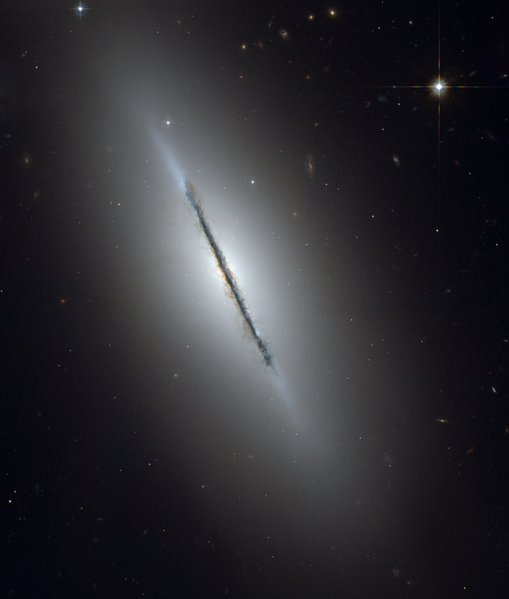文件:Ngc5866 hst big.png
外观

本预览的尺寸:509 × 599像素。 其他分辨率:204 × 240像素 | 408 × 480像素 | 652 × 768像素 | 870 × 1,024像素 | 1,739 × 2,048像素 | 3,190 × 3,756像素。
原始文件 (3,190 × 3,756像素,文件大小:25.78 MB,MIME类型:image/png)
文件历史
点击某个日期/时间查看对应时刻的文件。
| Ngoenz/Seizgan | 缩略图 | 大小 | Bouxsawjyungh | Gejgangj | |
|---|---|---|---|---|---|
| seizneix | 2009年2月16日 (It) 18:38 |  | 3,190 × 3,756(25.78 MB) | Spencer | {{Information |Description={{en|1=From original NASA press release: :This is a unique view of the disk galaxy en:NGC 5866 tilted nearly edge-on to our line-of-sight. Hubble's sharp vision reveals a crisp dust lane dividing |
文件用途
以下页面使用本文件:
全域文件用途
以下其他wiki使用此文件:
- ab.wikipedia.org上的用途
- ace.wikipedia.org上的用途
- af.wikipedia.org上的用途
- af.wikibooks.org上的用途
- af.wikiquote.org上的用途
- af.wiktionary.org上的用途
- ak.wikipedia.org上的用途
- als.wikipedia.org上的用途
- am.wikipedia.org上的用途
- am.wiktionary.org上的用途
- ang.wikipedia.org上的用途
- ang.wiktionary.org上的用途
- an.wikipedia.org上的用途
- an.wiktionary.org上的用途
- arc.wikipedia.org上的用途
- ar.wikipedia.org上的用途
- ar.wikibooks.org上的用途
- ar.wikinews.org上的用途
- ar.wikiquote.org上的用途
- ar.wikisource.org上的用途
- ar.wikiversity.org上的用途
- ar.wiktionary.org上的用途
- arz.wikipedia.org上的用途
- ast.wikipedia.org上的用途
- ast.wiktionary.org上的用途
- as.wikipedia.org上的用途
- av.wikipedia.org上的用途
- ay.wikipedia.org上的用途
- az.wikipedia.org上的用途
- az.wikibooks.org上的用途
- az.wikiquote.org上的用途
- az.wikisource.org上的用途
- az.wiktionary.org上的用途
- bat-smg.wikipedia.org上的用途
- ba.wikipedia.org上的用途
- bcl.wikipedia.org上的用途
- be-tarask.wikipedia.org上的用途
- beta.wikiversity.org上的用途
- be.wikipedia.org上的用途
- be.wikibooks.org上的用途
查看此文件的更多全域用途。
